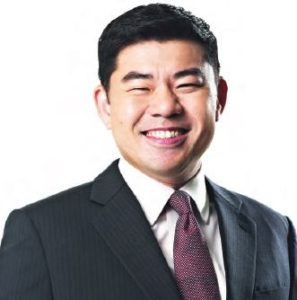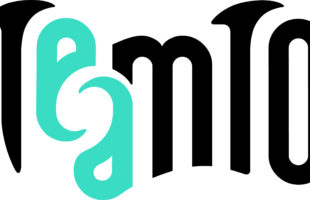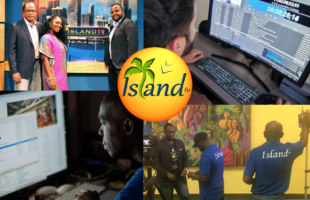
Gabriel: IMDA was set up to drive this notion of convergence. By convergence we mean the amalgamation of Infocomm and Media – it’s a new and exciting way for many Infocomm companies. They now recognise how important the media or content, in general, is for branding and building more loyal customers and for differentiating themselves in a very crowded and competitive marketplace. Everybody understands the potential of going digital and for IMDA; I think having an agency dedicated to looking into this area of convergence has its purpose. As far as industry development plans are a concern, we certainly have strategies to proliferate this sector.

Sounds good, but where do you start development?
Gabriel: We are helping to develop talent and competence in a sustainable manner. First and foremost, the sector must demonstrate excitement. Only then will talents be attracted and see a future. We need to create avenues for those with passion and talent. Then there’ll be the dedication to own their craft and grow. Media is not really science, it is arts-driven. There are ways to enhance skills, to be able to give our talent a deeper understanding by exposing them to the international partnerships and they can benchmark for themselves. We have various programmes such as the Talent Assistance scheme, where they can apply for overseas apprenticeships.
Do you have a bigger budget for the initiatives?
Gabriel: Over the last few years, we have been announcing the budget. But our focus has shifted rightly to areas where we can really build the capabilities and talents. We will soon be launching the PIXEL Studios, which is a physical space for digital content creators to come as a community. They can learn from each other and experts around the world, and to be able to perfect their crafts. The space is for everyone including business owners because if you have a successful digital channel, you are actually in business. Advertising will provide the revenue and there are ways to attract and engage your fan base.
Can Singapore be a media magnet of Asia?
Gabriel: I don’t see why not. For a long time, Singapore as an economy has been positioned as the best of the East and West, it’s probably the right intersection with Infocomm media. We can continue to be a place to ride on Asia’s growth; there are lots of exciting stories to be told here. Asian media companies yearning to go to the West, just like other countries before, can use Singapore as a base. It’s a great socialisation approach, likewise for western companies trying to reach Asia can establish their HQ, here – it is a great place to understand Asia and the environment that is very similar and convenient for them. I think we can play this role if we position ourselves well.
What is the media’s contribution?
Gabriel: It depends; the media is a sector that depends on the way it is classified. Even if the contribution is not in relative terms, if the economy grows and even if we maintain our share, the media is a value-added source. The output will continue to grow and we are very happy with it. But it’s really beyond just the numbers or GDP. The media and content being the way they are – it’s about Singapore’s standing and how it contributes to our brand equity, how it adds to our reputation around the world. Some of these are immeasurable but you know that it means something as a brand that is loved and synonymous with good things.
Do you foresee IMDA playing a bigger role now?
Gabriel: I think we can definitely leverage on the convergence. Take AR/VR for example, this is a classic case where a successful AR/VR content is a merger of tech and media. The content on the screen is the media component while the technology aspect of AR/VR brings the pragmatic effect – how it is really able to map and integrate with other types of services or data points and amplify the user experience. Gaming is another example where there’s the media and tech elements because premium games have great storylines to keep the players hooked on. Whether you are playing Assassin Creed, if there’s a storyline to keep you coming back, you will explore the new world. The technological aspect pulls everything together – the design, authentication, monetisation and distribution for a complete 360 transmedia sort of approach. These are just two examples where I believe a single entity such as IMDA will help to bring some of the more tech groundings into a traditional media play and bring the media to traditional tech companies, helping them to brand and add value to their creations. Earlier this year, we partnered Brand New Media for a programme to train Singaporeans in the development of a brand campaign from its conceptualisation stage to developing proposals for a client’s brief and that does not have to be confined to a media environment. With those skillsets, you can apply content creation into developing equity. As it branches out, the convergence comes in handy and there are positive spillover effects that deliver real economic outcomes and we are trying to leverage that as much as possible. Now for training, with AR/VR simulations in place, firefighting, clinical surgery, emergency room response are some of the prototypes ready to engage. It’s about creating realistic scenarios, generate worlds where people immerse themselves and think that this isn’t fake, and see themselves in the setting. So in real life, when the surgeon makes his first cut or the firefighter deals with his first fire, it all seems that they have done this before. This is an extension that I believe being IMDA, we can bridge the media and tech component and bring it to other sectors as well.







